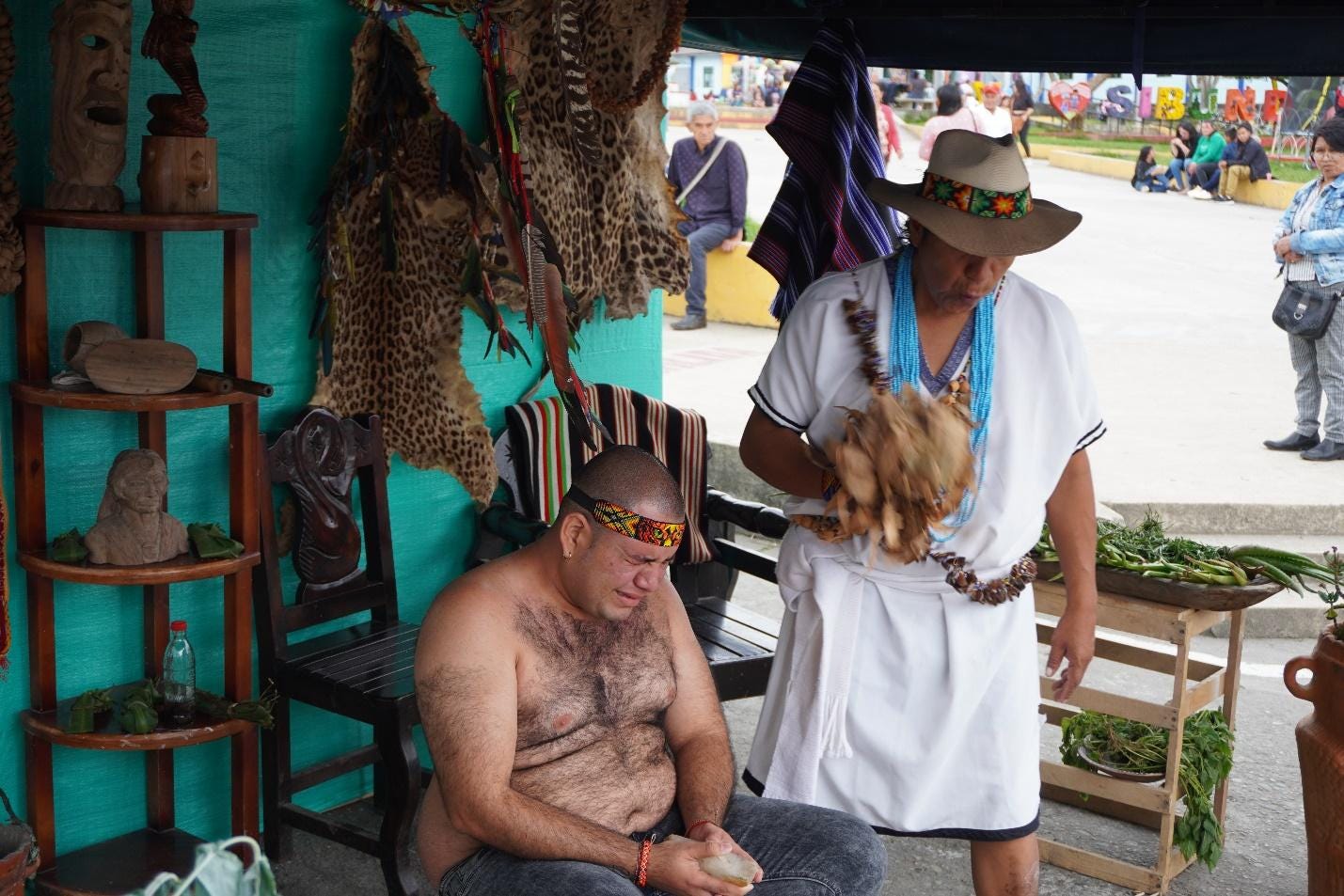Season of Flourishing: Ritual Renewal in the Colombian Andes
Anthropologist Rowan Glass takes us to Colombia's Sibundoy Valley for the festival of Bëtsknaté, one of the climactic events in the Kamëntšá calendar
The overpowering din of mingled drums, rattles, flutes, harmonicas, horns, shouts, and thousands of footsteps on pavement grew louder as the Matachín, the red-masked avatar of a forgotten sun god, led his people towards the towering cathedral at the center of Tabanok, the ancestral homeland of the Kamëntšá. We were here for Bëtsknaté—the “Great Day” of the Kamëntšá people, otherwise known as the culmination of Clestrinÿe, the annual “season of flourishing” which celebrates the brightest days of the year in the Sibundoy Valley, a verdant basin between the Andes and the Amazon of southwest Colombia.
Every year on the Monday before Ash Wednesday, the Kamëntšá don their ceremonial regalia, take up their instruments, and embark on a procession which renews their people’s ancestral contract with their forebears, with Mother Earth, and with the cosmos itself. Vibrant colors, discordant sounds, and all manner of sights and symbols converge in the commotion of a people celebrating an annual ritual of resistance and renewal.
Contrary to appearances, however, the modern Bëtsknaté celebration is not an ancient ritual but a modern innovation which both draws on Kamëntšá tradition and responds to contemporary questions of culture and identity. It draws on both the pre-Columbian religion of the Sibundoy Valley, a composite of Andean and Amazonian belief systems, and the colonially imposed Catholicism brought by the conquering Spaniards. The Capuchin missionaries who once ruled the valley tried to stamp out the practice of Clestrinÿe. When the tradition survived, their Catholic successors sought to downplay its Indigenous elements by terming it the “Carnival of Pardon,” which emphasised orthodox Catholic notions of guilt and ablution from one’s sins. Today, whatever Clestrinÿe is, it is clearly neither purely Indigenous nor totally Catholicised. It is, rather, a syncretic composite of two worldviews, a discursive field whereby differing visions of Kamëntšá identity play out.
In this sense, though the Kamëntšá are unique, the processes of syncretism, interculturality, and the struggle over history, identity, and meaning which define them are familiar to most Indigenous cultures, past and present, who find themselves faced with the breakdowns and ambiguities in meaning that coincide with colonialism and its legacies. By preserving and reimagining their traditions even in this situation of semantic confusion, however, the Kamëntšá case demonstrates that cultural loss is not a foregone conclusion. Instead, cultural renewal and autonomy are viable possibilities for all so-called marginalized peoples in similar contexts of cultural change and upheaval.
In the photos below, we observe some of the syncretism at work in Clestrinÿe, wherein the Indigenous and the Catholic converge in the frenzied excitement of the Great Day, wherein the ritual contract is renewed for another year. The following account is based on four months of ethnographic fieldwork which I conducted with the Kamëntšá over the summer of 2022 and February 2023.

The place that the Kamëntšá call Tabanok (“place of return”) is better known to outsiders as Sibundoy, a town which also lends its name to the small valley which surrounds it. The Sibundoy Valley is nestled between the high Andes and the Amazonian lowlands of southwest Colombia, serving as a vital crossroads between two regions of very different ecologies and cultures. The Kamëntšá people have called the Sibundoy Valley home since time immemorial. Until the arrival of the Spanish midway through the 16th century, the Kamëntšá lived in relative harmony with the neighbouring Inga people, bound as they were to their sacred homeland.
The sporadic violence and intermittent missionary efforts ushered in by colonisation introduced significant changes in the cultural universe of the Kamëntšá. The Andean-Amazonian spirituality of the precolonial era, which revered sun and moon deities but made ritual use of ayahuasca, gave way to a folk Catholicism which retained many elements of the old religion. Despite these changes, a succession of missionary orders proved unable to establish a lasting foothold in this still remote corner of the Spanish Empire. The relative isolation of their homeland and the misgivings of the colonists ensured that the Kamëntšá were only peripheral participants in the colonial system which ruled Colombia for 300 years.
The state of relative autonomy that characterized the Sibundoy Valley throughout the colonial period ended with the establishment of a 70-year Capuchin mission at the turn of the twentieth century. The Capuchins brought with them more than an orthodox temperament which had no tolerance for the syncretic folk Catholicism already practiced in the Sibundoy Valley. They also brought roads, settlers from elsewhere in Colombia, and the coercive force of the Colombian state, which granted the Capuchins the right to ‘civilize the savages’ in their name.
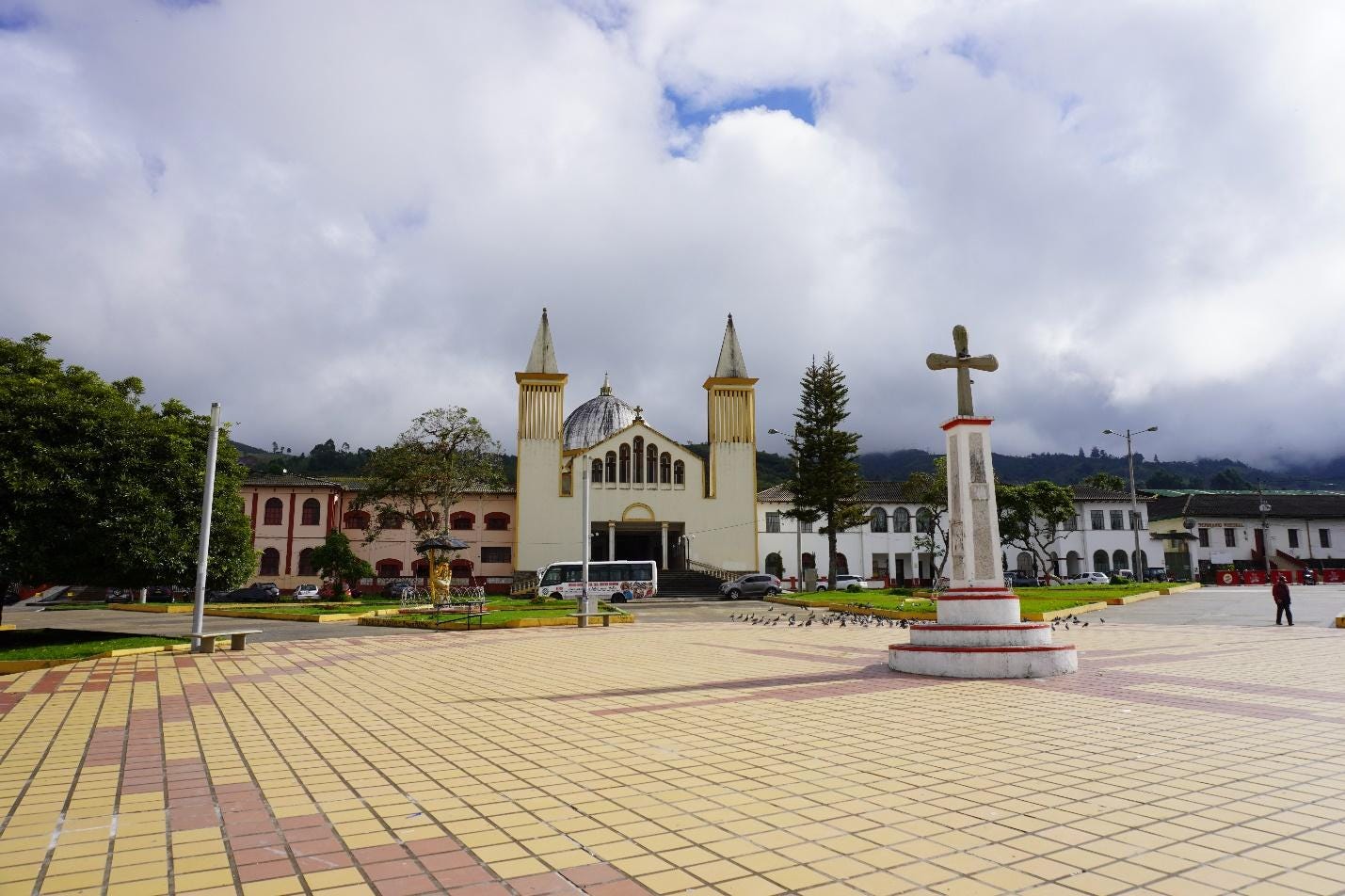
By 1970, after 70 years of Capuchin repression, the missionaries were finally forced out. The valley they left was profoundly altered compared to the one they first settled. White settlers now outnumbered the valley’s Indigenous inhabitants, who were forced from the productive slopes to the swampy base of the valley which floods with every rainy season. All the best land and industry was in the hands of settlers, while the Kamëntšá were made to work as peons on the same smallholdings expropriated from their parents and grandparents. No sooner did the Capuchin fathers leave than the guerrillas and paramilitaries arrived with their ideologies and their rifles, and the narcos with their coca. The actors changed, but the cycle of violence continued.
In the wake of the damage the Capuchins caused, the Kamëntšá have struggled to make sense of their identity and situation. Some among them are pessimistic about the future of their people. Others in the community, however, have gotten creative, finding innovative ways to revitalize their culture and keep to the old ways. During my time with the Kamëntšá, I witnessed some of the ways in which the whole community is actively engaged in keeping their culture alive and building autonomy day by day. There is no clearer manifestation of this effort than the annual Bëtsknaté festival.
Bëtsknaté is an amalgam of the old folk Catholicism of the colonial era, the pre-Columbian Andean-Amazonian spirituality which undergirds it, and the institutional orthodox Catholicism of the Capuchins. In fact, to most outsiders, the festival is erroneously known as the “Carnival of Pardon,” a name given to it by the new missionaries who replaced the Capuchins after they left the valley. Whether the result of an innocent misinterpretation or an intentional act of Christian repackaging, this misnomer obscures the actual significance of the festival. It’s not about being pardoned for one’s sins, or at least it wasn’t before the Catholics introduced the idea. In origin, it’s about renewal—of culture, society, the cosmos itself.
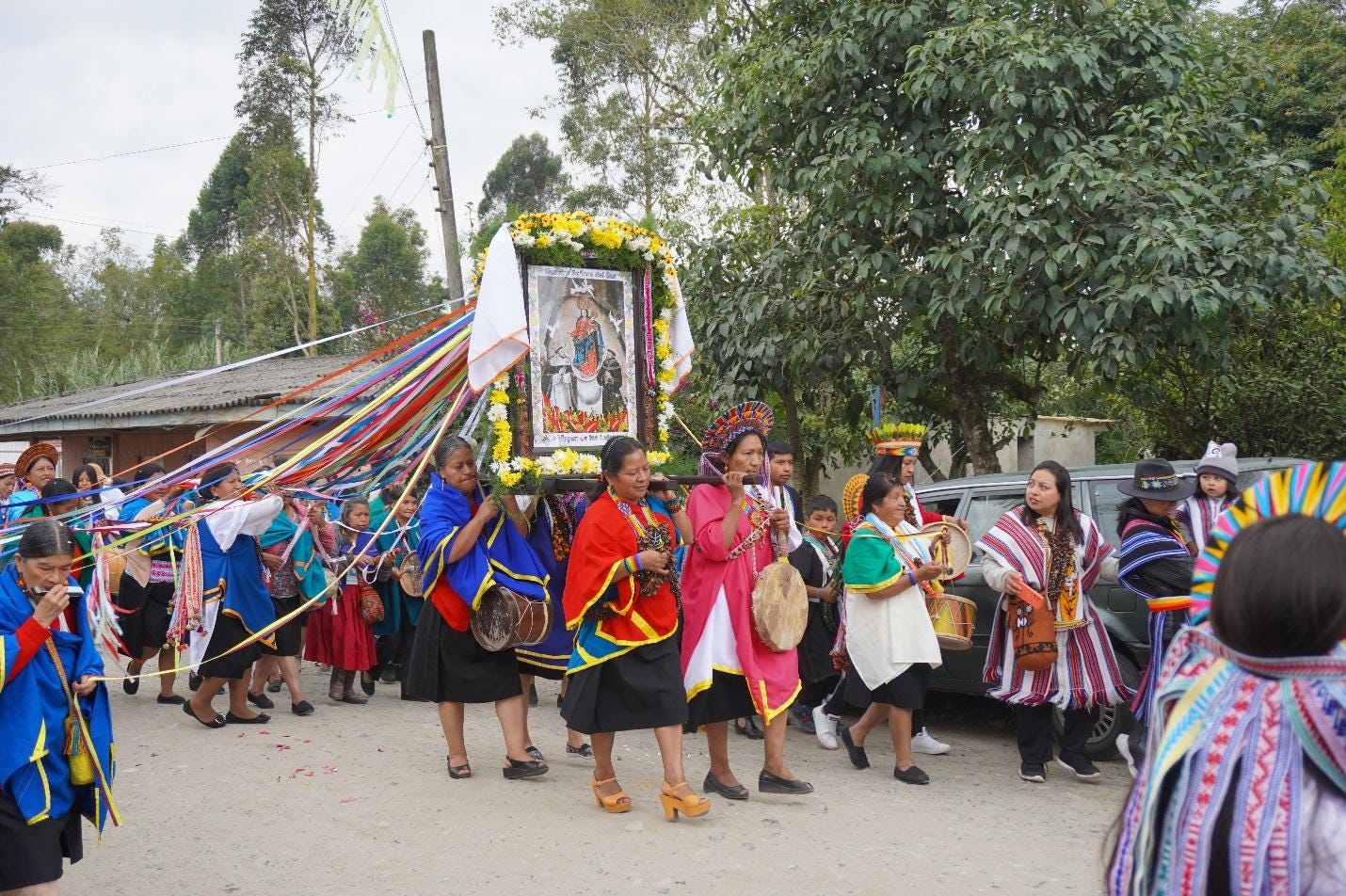
Take, for example, the tradition of erecting a ‘castle’ of woven palm leaves outside of the Indigenous council building in Sibundoy. At a key point in the progression of the festival, masked figures called Sanjuanes take turns trying to tear the head off the oldest rooster in the community, which is hung by its feet from the arch of the castle. The term ‘Sanjuan’ could refer to Saint John the Baptist, who was killed by beheading. Others say that the decapitation of the chicken ensures the renewal of cyclical time.
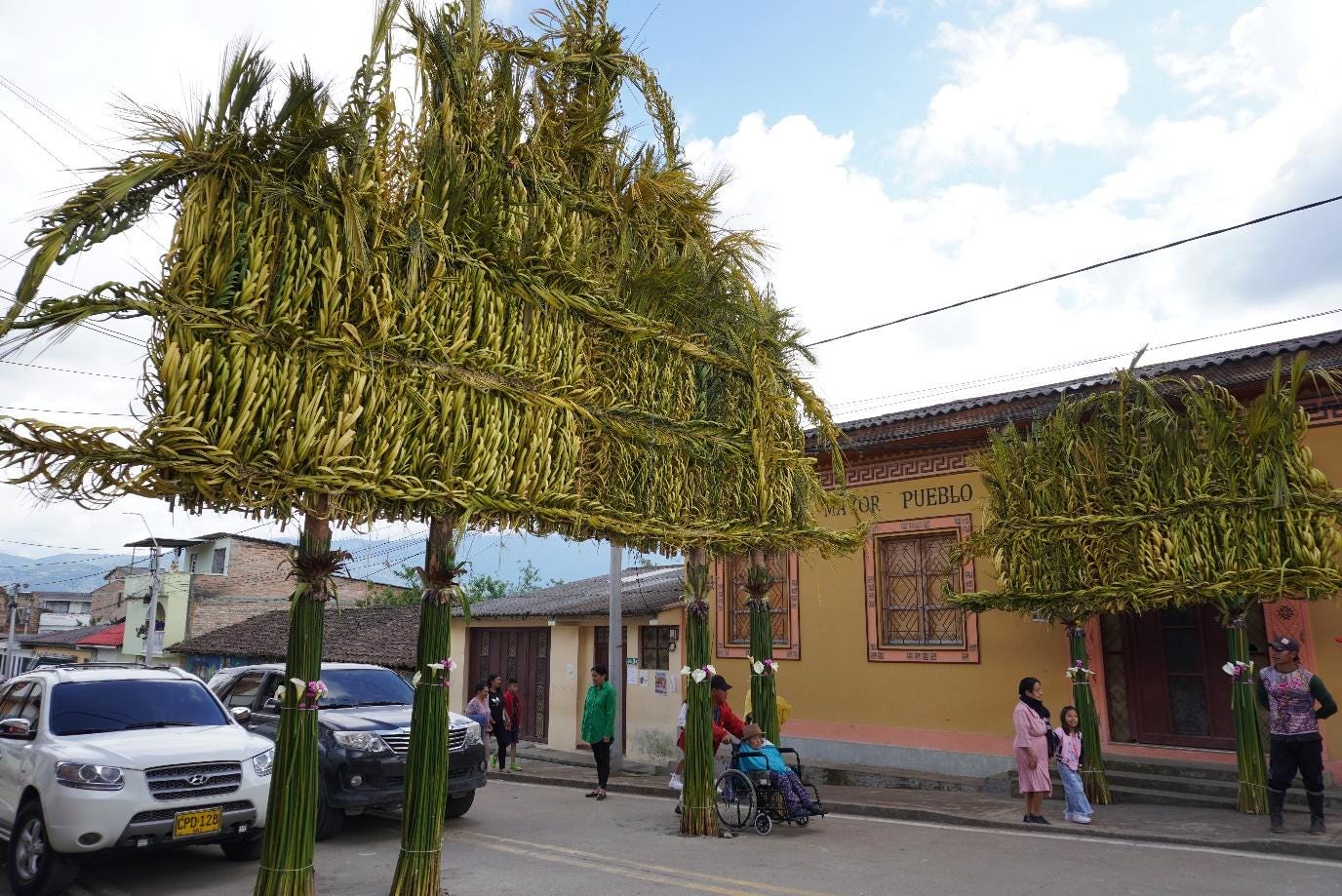
It’s not always clear which aspects of the modern Bëtsknaté festival are ‘original’ and which are recently invented. Some were once parts of separate celebrations that occurred on different days throughout the year. Whatever the case, the Bëtsknaté festival is now too crosshatched to disentangle the origins of its various features, whether Indigenous or Catholic.

The mass tourism attracted to the valley each year—and, consequently, the misinterpretations of Kamëntšá culture that result—bears uncertain tidings for the future of this festival and its meanings. Even within the community, the meanings of Clestrinÿe remain contested between ancestral and Catholic interpretations. When I attended the Bëtsknaté Mass on February 20, 2023, the governor of the Kamëntšá reservation council ended his customary speech at the pulpit on a defiant note, asking people in Kamëntšá to jeer and make noise if they were dissatisfied or disillusioned with the Church. This was meant to be a form of showing discontent and resistance, but no one made any noise; according to one collaborator, the older generation—those who grew up in the Capuchin Mission—are still too reverential towards the priests and the Church to fathom speaking out against them. This demonstrates the contestations of meaning at work in this space of interculturality and syncretism, where two very different cosmovisions vie for legitimacy. For now, institutional Catholicism remains dominant.
But from outside the Church came the sounds of music and revelry, where thousands—many more people than filled the cathedral—chose to honor the ancestors whose bones lay under their feet instead of paying homage to an ecclesiastical hierarchy that many in the community feel no longer represents them. Now two interpretations of Clestrinÿe exist side-by-side: on the one hand, the music and revelry of thousands, venerating their ancestors and defying the Catholic connotations of the festival; on the other, the somber, pensive prayers of the people within the church, asking for forgiveness of their sins. To many, Clestrinÿe is no longer the 'Carnival of Pardon,' but is undergoing another transformation.
As 7000 pilgrims—virtually the whole community—marched their way to the cathedral, my companion, a Colombian linguist writing his dissertation on the attempted recuperation of the moribund Kamëntšá language, said to me: “I see a lot of resistance here.” I had to agree; as the Kamëntšá people celebrated the annual renewal of the ancestral contract—asking pardon from each other, from Tsbatsána Bebmá (“Mother Earth”), and from God—I saw a people in resistance. Despite centuries of oppression and colonial dispossession which continue to the present day, the whole Kamëntšá community turned out to celebrate the renewal of the cosmos for another year. The vitality of Bëtsknaté illustrates that the Kamëntšá are a people who are actively renewing their culture, both in its ancestral elements and its modern ones. This renewal is inextricable from their continued existence within their ancestral territory, ensuring that the bonds that have tied them to it since the dawn of time will persist until its end.
The Kamëntšá, like all Indigenous peoples who survived the initial onslaught of colonialism, continue to suffer its legacies. What is remarkable, however, is the extent to which this community has survived and reclaimed its cultural autonomy by both heeding the wisdom of the ancestors and creatively adapting to contemporary changes. That the Kamëntšá have reproduced their culture and community so successfully despite 500 years of colonial pressures demonstrates the resilience and adaptation that all so-called marginalized and oppressed peoples are capable of. The cultural survival of peoples like the Kamëntšá indicates the viability of autonomous alternatives to the assertion, on the part of Western globalization, that there is only one way of being in the world and that all minority cultures are doomed to be subsumed by it. The Kamëntšá example shows, to the contrary, that another world is possible. In this respect, the story of the Kamëntšá exemplifies that of many other Indigenous peoples worldwide; it demonstrates the processes through which Indigenous communities can autonomously renew their culture in perpetuity.

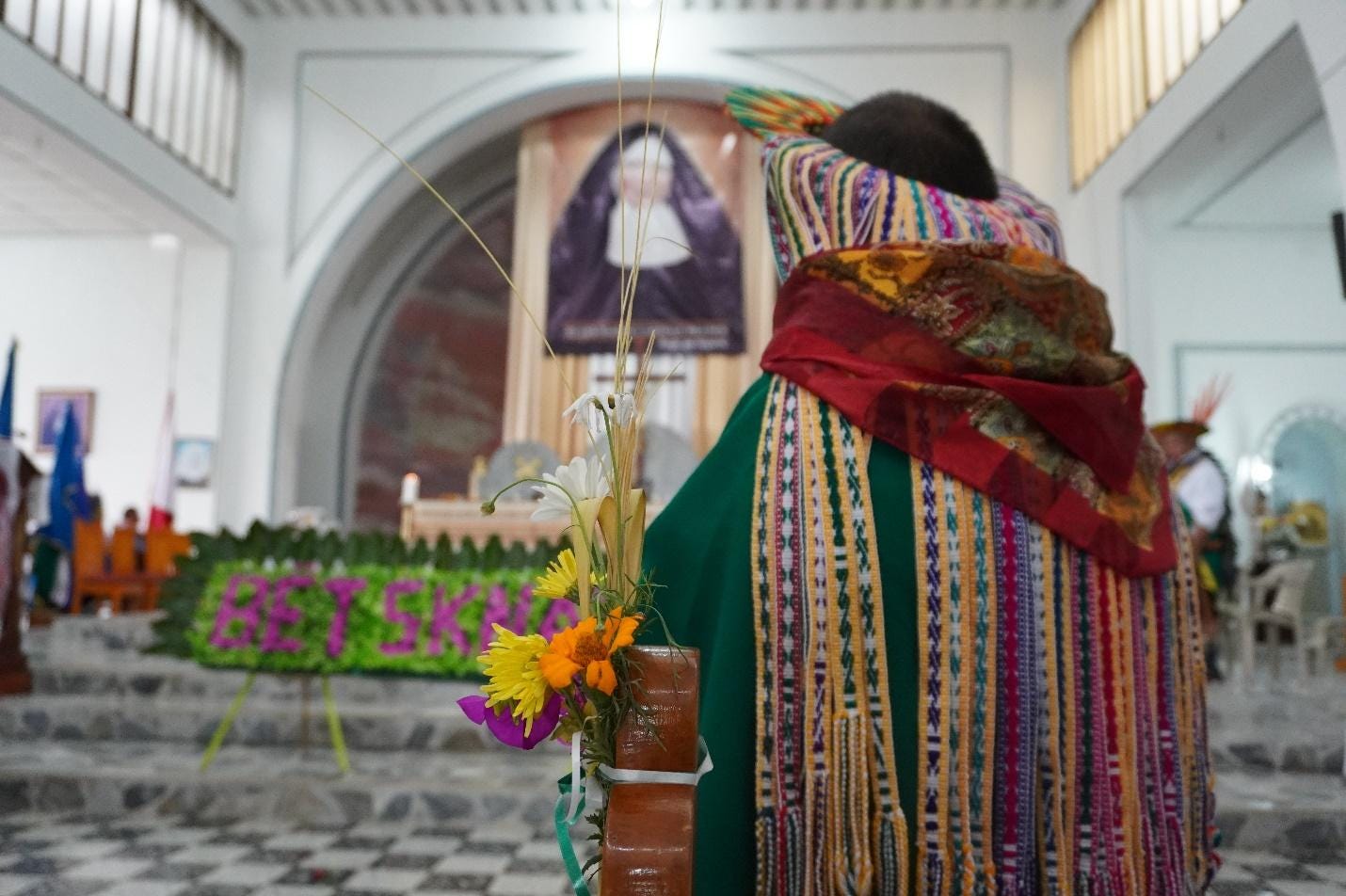

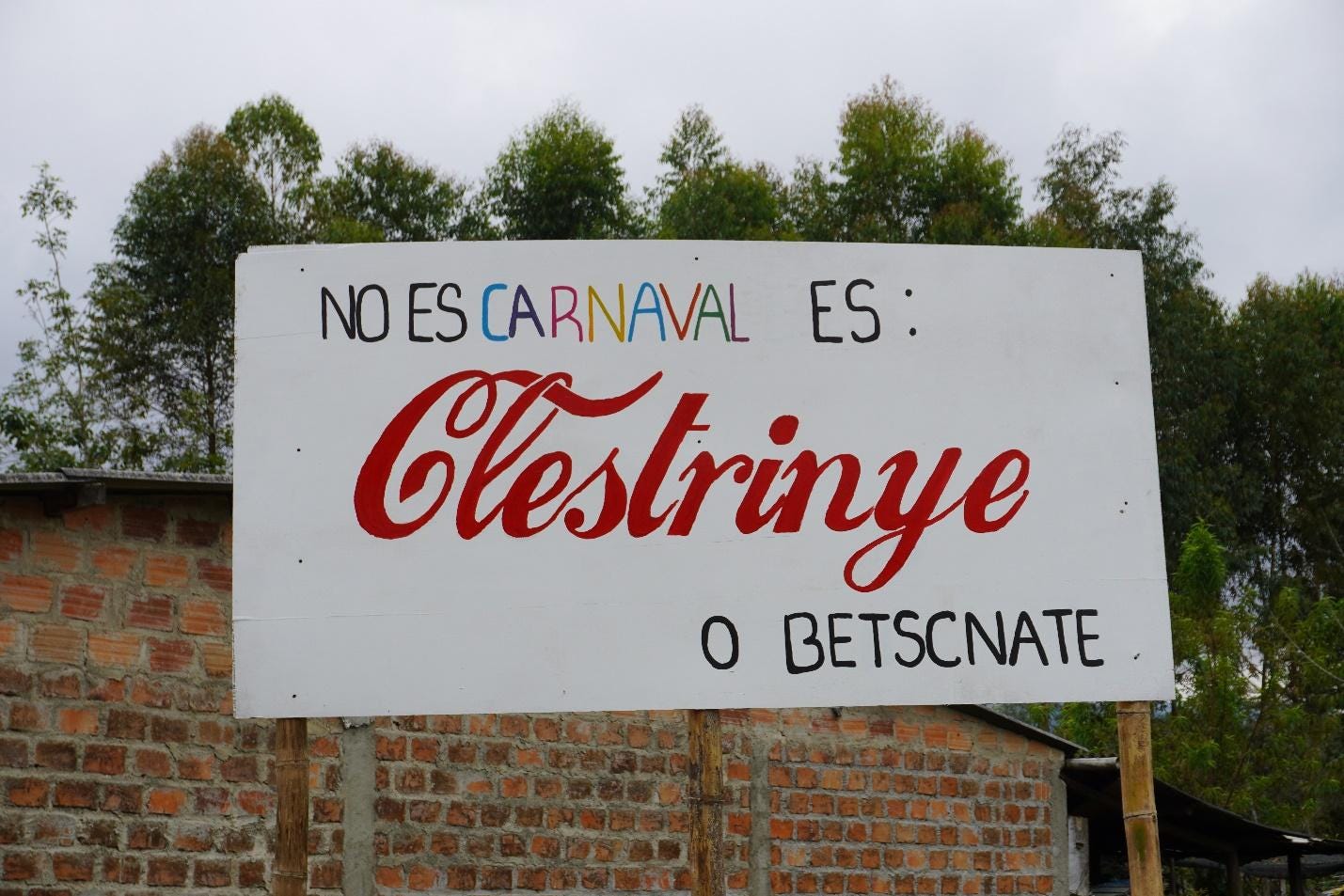
Shamanic traditions which were never successfully stamped out by the Capuchins persist in the Sibundoy Valley and find expression during Bëtsknaté. Here, a shaman performs a purification ceremony on a man thought to suffer from a spiritual malady.





